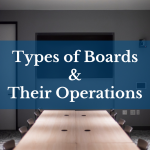Picture this. You’ve just completed a two-day annual planning workshop with your Board of Directors, set against a backdrop that encourages free thinking, new ideas, lots of time for networking, a barrage of “ah ha’s” and comments like “good idea—might have potential—can’t miss—right on target”. Armed with eighty-seven new ideas, you thank your Board for their contributions, and then you get lost on the way to the airport and miss your plane because you can’t think straight. Once you do get back to the office, you go off with your management team to identify the three or four “ideas” you might be able to afford and might have the resources to implement.
Sound familiar? For most of us, it’s real life. For some it might be real drama. For all association CSOs, it’s an ongoing issue we all face.
Fortunately, after recovering from the initial shock, most association CSOs have an opportunity to go back to their volunteer boards to pose the inevitable question, “If this is what you want, what do you want us to stop doing? And by the way, here’s a list for you to choose from. Let’s start now.”
Holding your Board’s feet to the fire when they want more than the current resources of the association can accomplish and sustain is an essential quality of a CEO who wants to lead his or her association.
It also helps lead the Board in:
- Setting the strategic direction for the association; and
- Reaching the final decision on the allocation of financial resources needed to execute the association’s annual plan.
With the annual plan in hand, it’s then time for the Board to get out of the way and allow the professional staff to run the organization. But exercise some caution with this practice. Not seeking ongoing advice from your Board could cause you to miss much of the potential talent and input around the Board table—contributions that are very valuable.
Don’t forget, these people want to make a contribution and leave a mark on their association, otherwise they wouldn’t have made the commitment to sit on your Board.
Seeking their advice and counsel, however, requires a very important management tool: The Board must understand that this additional role is to offer advice, ideas or suggestions only and the CSO must understand the absolute need to decide when and where to say “no”.
The decision to say “no” to a Board of Directors cannot be taken lightly. Among the key points:
- Carefully examine all options and provide the Board with a strong business case from management that maximizes the human and financial resources of the association while also considering what might have to “go” if you move to the Board’s initial recommendations.
- Take the time to carefully explain your decision to your Board. They need to understand the “why nots”. This requires a high degree of diplomacy on the part of the association CEO to gain the Board’s respect over the longer term.
Managed properly and where warranted, the ability to say “no” is fundamental to building Board respect for the association’s CSO and the paid professionals who have been hired to manage the association in the first place.
It also helps build mutual trust between the Board and the CSO, providing the CSO with the required authority to lead the Board in setting the strategic direction for the association and to manage the human and financial resources at hand.
A case in point, let’s take discussions at a recent Canadian Marketing Association (CMA) Board of Directors’ workshop where the objective was to explore ways through which CMA might take on a more active “thought leadership” role to further the Association’s vision to be the preeminent marketing association in Canada.
In reviewing the recommendations and resource plan coming out of the Board workshop, CMA management determined that CMA staff were at their maximum workload capacity, and that there were more pressing concerns and important CMA programming issues to deal with over the short-term. As a result, CMA management advised the Board it would not be possible to implement the recommendations without severely curtailing other essential activities.
Not closing the door entirely, we did examine other options with the Board. In the end we reached agreement to create a special Board-level “Thought Leadership Task Force” under the leadership of the Association’s current Board Chair. That group is charged with developing a clear set of recommendations that will focus the Association over the longer term without jeopardizing existing and very successful programming.
In the interim, we continue to explore opportunities where we can weave marketing through leadership through the Association’s existing programming. Discussions continue.
In conclusion, there will be times when an association CSO needs to say “no” to their Board of Directors. Successful CSO’s:
- Hold their Board’s feet to the fire when they want more than the association’s current resources can sustain.
- Keep their Board engaged. An engaged Board contributes advice, counsel and ideas beyond its formal decision-making role that will contribute to the overall long-term evolution and success of the association.
- Examine all options.
- Examine the required resources.
- Provide a strong business case for decision-making.
Being the CSO is not the same as being the Executive Director, CAO or COO, through admittedly in small organizations we may do all that too. It also means having the longer-term vision of where your association is going and how all the inputs fit, including Board ideas, advice and counsel.
When you have the respect of the Board, saying “no” can actually build your credibility and your stewardship of the organization. It can also keep you from getting lost on the way to the airport from your next Board retreat.



